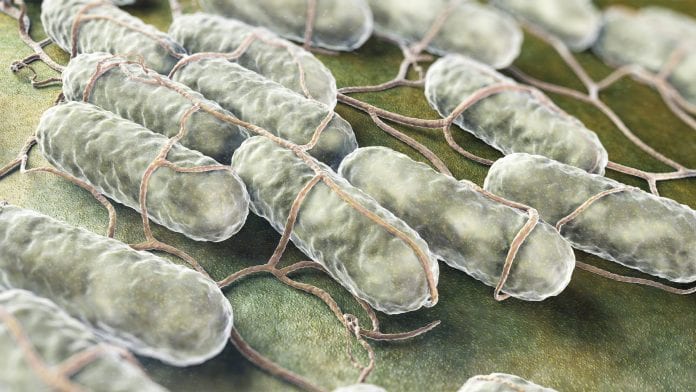
The devastating Salmonella epidemic is killing around 400,000 people each year in sub-Saharan Africa, now using gene expression, scientists are closer to understanding the bacteria.
Scientists at the University of Liverpool, UK, have completed one of the largest bacterial comparative gene expression studies to date. Invasive nontyphoidal Salmonellosis (iNTS) occurs when Salmonella bacteria, which typically cause gastrointestinal illness, enter the bloodstream and spread through the human body. The African iNTS epidemic is caused by a variant of Salmonella Typhimurium (ST313) that is resistant to antibiotics and generally affects individuals with immune systems weakened by malaria or HIV.
Gene expression and Salmonella
Dr Rocío Canals Alvarez, study author, explains: “Although the genomes of African and global S. Typhimurium are 95% identical, the remaining 5% is very different.
“Most of these differences do not cause changes in gene expression, but we need to identify the genetic alterations that affect gene expression and could influence the outcome of a bacterial infection in humans.”
To discover these key genetic differences, the researchers conducted a large-scale comparative transcriptomic approach between the lethal African Salmonella and the more common ‘global’ version that causes gastroenteritis.
Details of the study
Salmonella strains was grown in 16 different ways that represented different stages of the human infection process. The researchers also isolated Salmonella from mouse macrophages – which are immune cells used by the bacteria to hijack the host during infection.
By investigating the transcriptome of African and global S. Typhimurium under these different conditions, they discovered that 677 genes and small RNAs were expressed differently between the two strains.
A parallel proteomic approach identified the gene expression differences that led to alterations at the protein level.
Two proof-of-principle experiments revealed the genetic basis of an African Salmonella metabolic defect and discovered a novel bacterial plasmid maintenance system.
Professor Jay Hinton, who led the study, adds: “This study takes the power of transcriptomics to a new level for a bacterium. Our ‘functional transcriptomic’ approach is relevant to a broad audience and can be applied to many other organisms. The analytical pipeline and the community data resource aspects are generic and could inspire others to use a similar approach to answer their research questions.”









